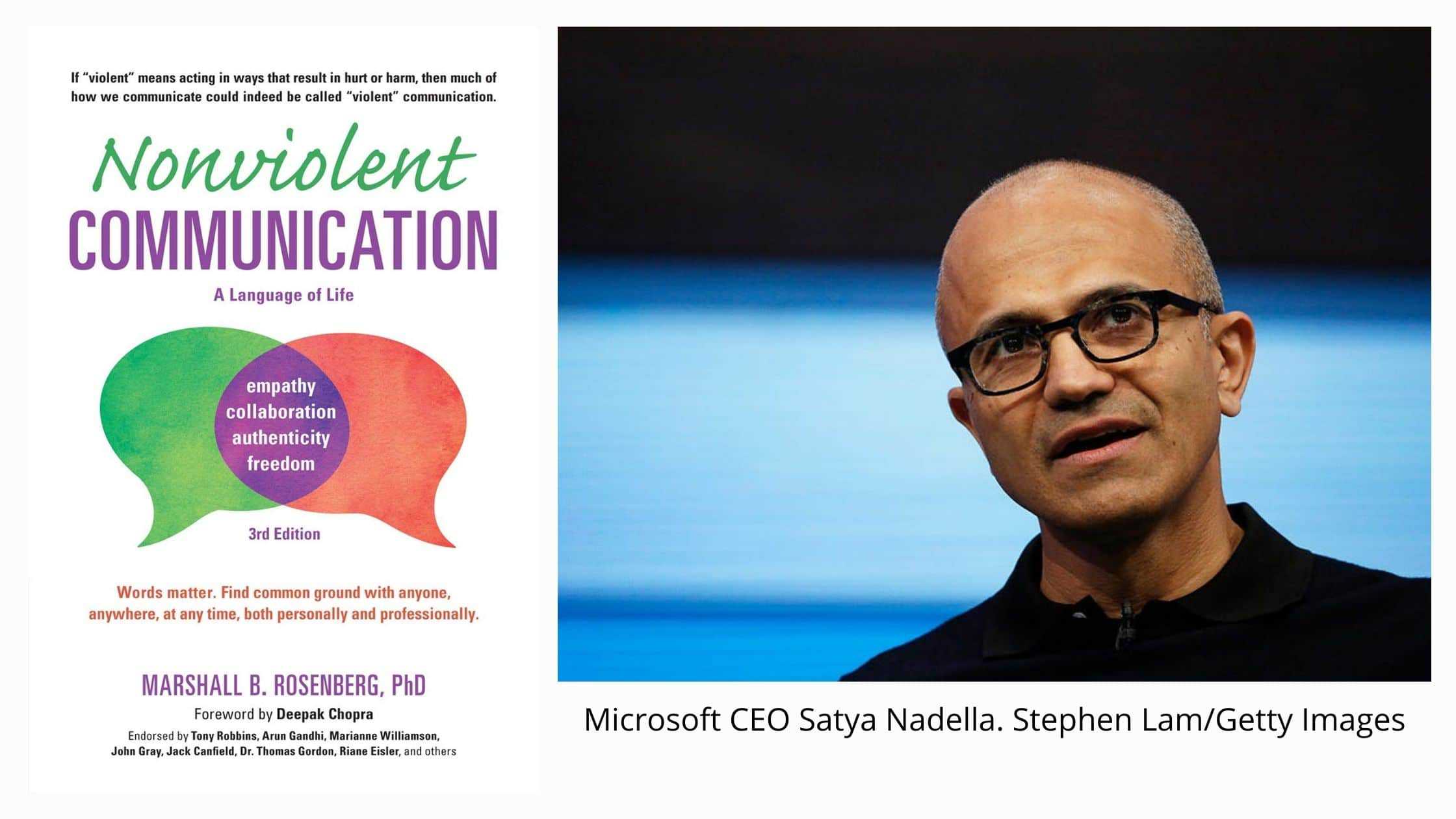Last year, I stumbled across an article on Business Insider. The article covered Satya Nadella and how he diffused Microsoft’s toxic culture by having his executives read this book. That book was Nonviolent Communication by Marshall Rosenberg. I’m always looking for ways to improve the culture of the teams I serve and felt this book was a great addition to that goal. I bought copies for each of my team members, split them up in pairs, and had them do teach backs to the rest of the team.
Here is my book review of Marshall Rosenberg’s Nonviolent Communication: A Language of Life: Create Your Life, Your Relationships, and Your World in Harmony with Your Values.
Building inclusive workplaces require improved understanding and compassion. This book will help you and your team do just that. Additionally, those things are necessary for excellent communication and having good relationships.
The Nonviolent Communication Four-Stage Model
Nonviolent Communication is a four-stage model: 1) observing, 2) feeling, 3) needing and 4) requesting. The observing stage of this model is invaluable. Learning to observe without tainting the observation with evaluation improves your communication and relationships to one of high intimacy and connectedness. Successfully “taking in” a person’s communication is powerful. My team struggled with the observing stage the most. As a result, we spent a great deal of time practicing observing.
Additionally, the book highlights that our actions, whether poorly expressed in an argument through yelling or swearing, occurs because of a need. When someone is stubborn, calls you names, or shouts hatred at you, they have a need. Identifying people’s needs helps you effectively communicate in a nonviolent manner.
The process of Nonviolent Communication taught my team and me how to connect in relationships throughout everyday conversations and intense conflict. Conflict is an indication that you want to be understood. Nonviolent Communication shows you how to make this connection during a heated argument to turn the conflict around and build a relationship.
Most importantly, Nonviolent Communication requires you to care about people. The NVC model won’t work if you can’t focus on people’s needs. However, if you are focused on building a positive and inclusive workplace culture, you are already establishing care for people with your team. As a result, this book is a great tool to add to your toolbox.
In Summary
In 200 well-written pages, it is an easy read. I paired up my team and had each one cover a step in the process. We then practiced each step for two weeks before moving on to the next. Because there are only four steps, it easy to understand and implement. The book is full of interesting stories that show the techniques in real-life situations. Additionally, a mixture of poems and quotes throughout the book accentuates the points nicely.
With a whole host of great advice and examples in this book, I couldn’t be happier to recommend it. I frequently find myself flipping back to specific parts all the time. In short, my key takeaway from reading Nonviolent Communication is:
- care for people is paramount to inclusive, productive, and collaborative workplace cultures
- the importance of identifying the other party’s needs
- listening empathically rather than judging
I find myself using these techniques frequently since reading the book. The responses you get when following the process are nothing short of amazing. I can’t recommend this book enough for anyone interested in bettering their team’s communication skills. Likewise, for improving your workplace culture, this book will serve you well. Nonviolent Communication helped Satya Nadella turn Microsoft’s culture from cut-throat and toxic to collaborative. It can do the same for your organization. Pick up your copy from Amazon today!
Disclosure: This article contains affiliate links, meaning I would get a commission if you decide to make a purchase through these links at no cost to you.
Last updated on October 3rd, 2020 at 09:13 am


